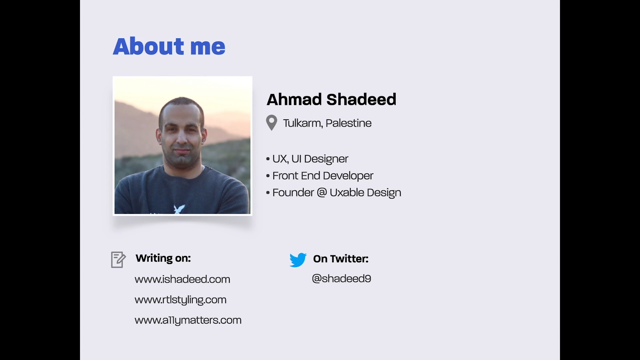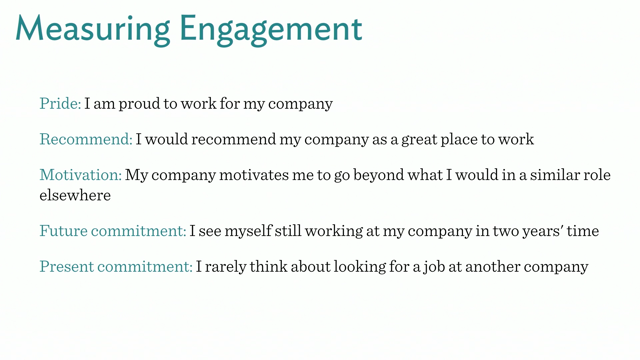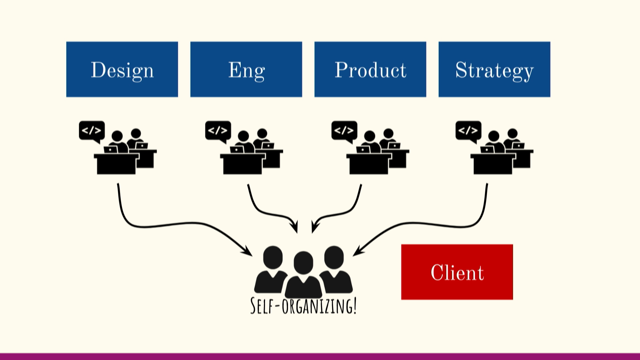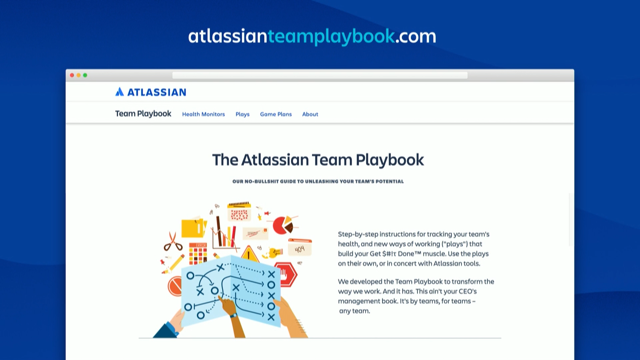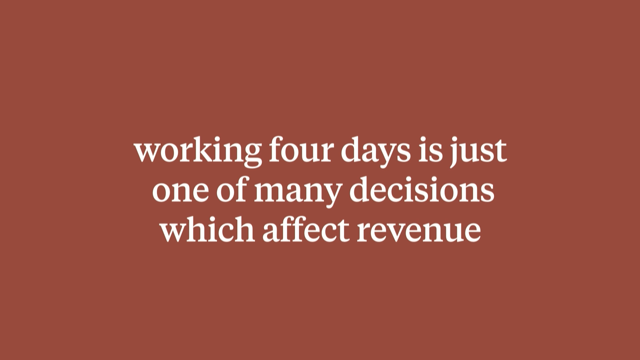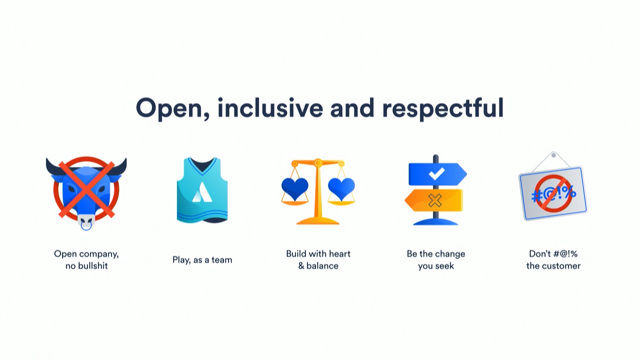(Really) Effective Succession Planning

(upbeat intro music) (applause) - Thanks everyone.
First of all I'd like to thank, or acknowledge the traditional owners on the land in which we gather today.
They got a goal of the organisation, so I respect the traditional elders, past, present, and emerging.
Succession planning. Right.
Hands up, who's heard of succession planning? So, its very basic, and often false level, it's used as a position management tool.
Mostly though, its used as a risk management tool. For example, what are we going to do when this person leaves, or how are we going to manage the transition of a team. Who might be next in line and most suitable to take over. But at its highest, and most sophisticated level, it is an impairing retention tool.
Why retention? Because when you really bring a succession plan to life, you're investing in hope, in commitment, and in growth. From an employee's perspective, hope means that the organisation sees a future for me that I'm curious about.
Commitment means being on an active succession plan, says that my organisation is commuted to the working relationship.
And growth, means that I'm investing in achieving results. Going above and beyond, and being told that I'm part of the organisations future, in a very specific way.
So lets have a look at what this means.
Research tells us that there's a direct correlation between effective succession planning and employee engagement.
Specifically, they found that where organisations invest in a development framework for candidates on succession plans, candidates experienced increased career success, confidence in the promotion process, higher sense of reward, where development and learning is customised and personalised.
And for those organisations, the use of structured approaches to succession planning instils commitment from their employees, leading to improved commercial outcomes.
Now, we're in activity, I just need everyone to stand up please.
Where possible, raise.
Thank you.
Stay standing, if your organisation has succession plans. Wasn't planning for this.
(laughter) Because my next question was stay standing if your organisation actively uses or implements succession plans. (laughter) Stay standing if you're on a succession plan, as far as your aware.
I'm just gonna go through these to make the point at the end.
But, stay standing if you are actively being developed in preparation for that succession plan role.
And stay standing if you were asked if you would like to do that role that you're on the succession plan for. My next question was, "So what does this tell us?" (laughter) Well, it tells us that many organisations, or maybe not as many, talk about having succession plans, some have succession plans, but very very few invest in them or maintain them. I'm now going to take you through the six steps of really effective succession planning.
Thank you for participating by the way.
So step one. Prioritise.
One of the effective tools here is to actually understand what the future needs of your organisation is.
And one of those ways is to get your hands on some strategic documents.
It might be business strategy, it might be some product strategies, it might be the technology strategy.
Have an understanding of what your organisation intends or how your organisation intends to spend the next couple of years, where they want to get to.
What are the key roles and skills that will be needed? Remembering that someone exists now, but some might not even have been invented. Step two, identify.
You now have a clear idea of what skills and roles you're going to need to achieve the strategic goals.
Step two is understanding where you are now, and what capability and structural gaps that lie ahead. Identify how you're going to find or source people to fill those gaps.
What are your internal options? Who do you need to develop? And who might you need or what skills might you need to source from the market. Step three, understanding impact.
So now you know where you wanna get to, you know what you need to get you there, and you know who you have already, internally at least. But you can't just flick a switch and all of a sudden somebody is ready for their role. Know would you be wise to pull them out of their day job at a moments notice.
And we've all seen what happens when we take a tactical approach, where we go, "Hey, we want you, we see the potential for you in this role, we want you to start developing yourself, oh and hey by the way, can you do your day job as well?" Step three is focused on planning for that transition to get ahead.
And you do this by having a clear idea of what the impact will be to the current situation. How will team productivity be handled or impacted? Does the person play a unique role in the team? And does the person have a unique skill that needs to be back filled or sourced externally? So think about a time when you moved house. Very stressful, I know.
Probably don't wanna go back to that time.
Did you pack and move everything in one day? Or did you do lots of activities that you planned ahead to make the transition more successful? Step four is the check in.
So as we realised in the activity area, we very rarely ask people if they want the role that they're on the succession plan for.
But this isn't just a modern day problem.
I'm going to take you back 400 years to Russia in the early 1600's.
To the beginning of the Romanov family.
Now many of us know the story of how this dynasty ended, Tsar Nicholas II, and his family were executed in 1918. But in the initial video, the historian Lucy Worsley, it will explain how the dynasty began.
Have a listen for the similarities in our topic today. - [Narrator] Back in 1613, Russia was lead less. There'd been years since the previous world in the stey. The Rulrex had collapsed.
The country was so weakened, that the Polish Army had marched right in and occupied the Kremlin.
Once the poles had finally been driven out, the great and gooder of Russia realised that they needed to stop squabbling, and unite around a leader.
Well they wanted the Romans had called a seize, the Germans a kaiser, and a Russian, a zah. They argued for weeks over who it should be, but finally they made their choice.
The only problem was, that nobody had asked this perspective zah, if he actually wanted the job.
(upbeat music) The high powered delegation set out from Moscow to find their hopeful leader, and bring him the good news. Their numbering pleated nobles, and leading churchmen the power brokers of Russia, or Muscovy, as it was also known.
Their journey took them more than 200 miles north. Across country side that was still dangerous and largely soulless.
And this was their destination.
The Apostasy of Monastery.
Overlooking the mighty river Vulgar.
(ship horn blows) It was still winter, and with no bridge back then, the delegation had to cross the ice to get to the Monastery.
(choir humming) Sheltering here, was the object to the delegations quest. A 16 year old boy, who was Mikhail Romanov. - So, what happens next is is that as part of the conversations of trying to woo Mikhail, is that he burst in tears.
He had a life planned ahead to spend in the church. He was not part of his future to be leading the Russian nation.
And so yes, he was very upset.
His mother apparently was very angry too, because obviously his future plans were just quite disrupted and she didn't want him being at risk and all the complications that could come from being in such a position of power.
So, we're not the only ones that don't ask before we sign up.
Sign someone up, I should say.
So, many of you might have seen this type of image, it's commonly found in HRM systems, the typical succession plan page, and as you can see, in that readiness column, we've got all sorts of options.
Ready now, ready in under a year, and ready in one to two years.
Is it even relevant to have candidates in scope if they could be up to two years away from ready? A two year lend is a long way out, especially at the moment.
And it's only going to get, that time frame is only going to get shorter. And do you confidently know how things are going to look then? I'd suggest that it's not viable to include candidates who are more than a year out from being ready. There are just too many unknowns.
Step five, progress2ready.
So progress2ready is a programme that I've created for managers to use with their employees, or for you to use for yourself.
Progress2ready is made up of six T's.
Traction, how to get from where you are now to where you want to be.
Time, really there is 100% of time available to dedicate to up-skilling.
What is the up-skilling vs day job time split? Trade-off, a stakeholders on board with the split. What is in place to support this? Truth, how much time is honestly required to develop those skills, and how much time is realistically available? Track, monitor progress against the actual available time. And tweak, have conversations with your manager, or with the candidate to review how things are progressing. If ongoing time conflicts exist, priorities may need to be tweaked or altered. And it's okay to cause correct, this is a living tool. That's just a screen shot of the tool there. So step six is maintain.
So, the key to this programme is to maintain it. Is to keep it active, think of it as your human business continuity plan. Remember the positive effect that this will have on retention and on your peoples engagement.
If its in your drawer, its not working for you. Just as if it's on your shelf, it's not working for you. When you really bring the succession plan to life, you are investing in hope, and in commitment, and in growth. This particular step adds the greatest value. So just a recap.
Step one, prioritise.
Be guided by your business product and technology strategies.
Know the key roles and skills that you need for the future. Step two, identify.
Identify the gap between the future needs and the current skill and capability.
And identify who has the potential to fill those gaps. Step three, understand the impact.
Understand the impact of taking people out of their current role.
And plan for how to use this time most effectively, it is a gift.
Step four, check in.
So before taking action, have the conversation. Remember the Romanovs.
Step five, progress to ready.
That's the six T's.
And step six, maintain.
That's the most valuable step out of all of the six. This has been a team focused approach, but also if you did want to apply it to yourself, really the starting point is the only point that's slightly different, and that is to review your development plans. So instead of starting with the pieces strategies, or the text strategies, start with your own strategy. What is it that you need to be focusing on? What are your current development areas affecting that unit as well? So there are the six steps to really effective succession planning.
So if anybody would like- I haven't had a chance to put the template on the website, but if you would like a copy of that template just drop me a note and I will come back to you with the template and yeah if you want to have a chat with me about any of that sort of stuff or any other employee engagement and retention type activities, yeah I'm happy to chat about that anytime of the week. Thank you.
(upbeat music)


